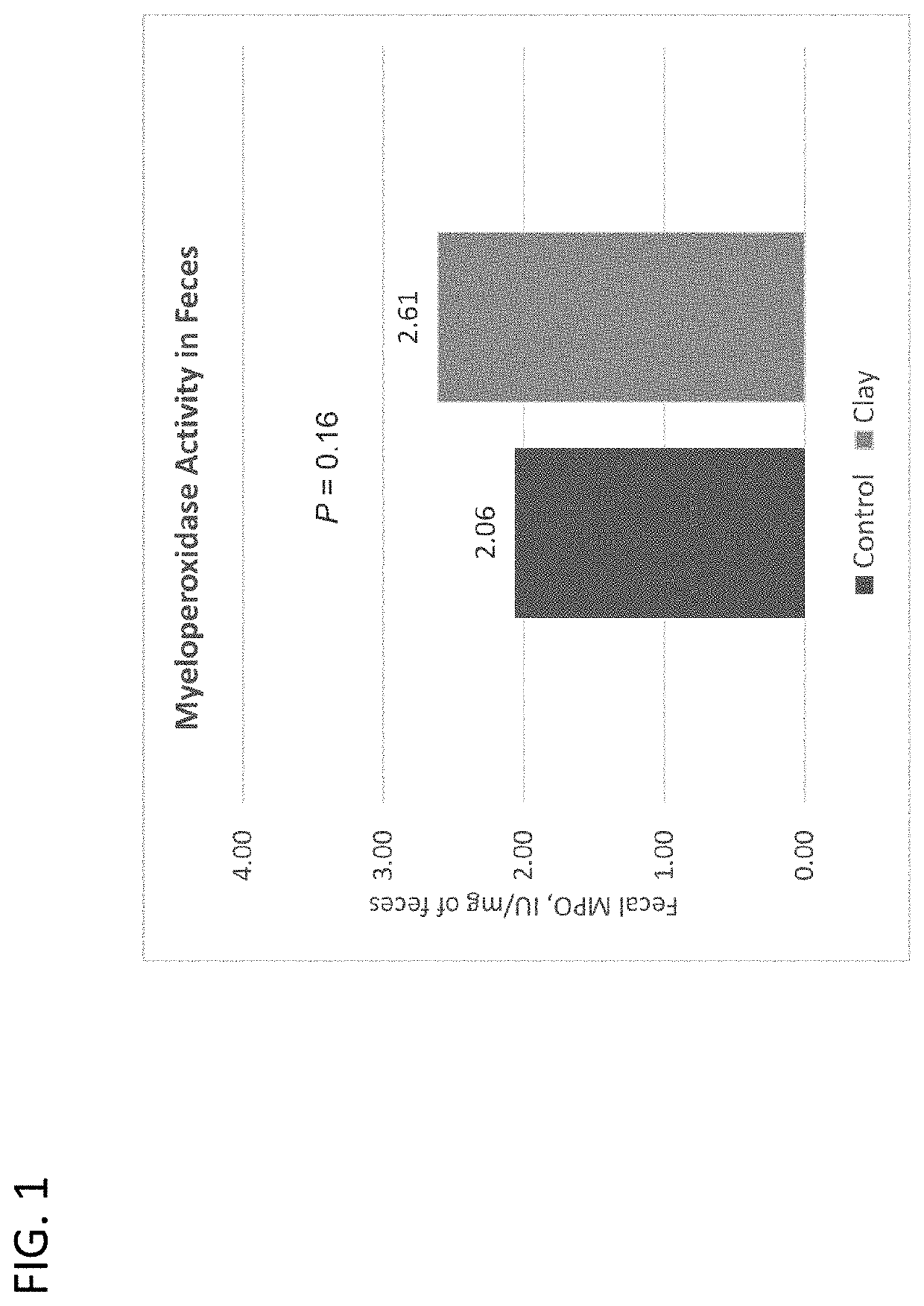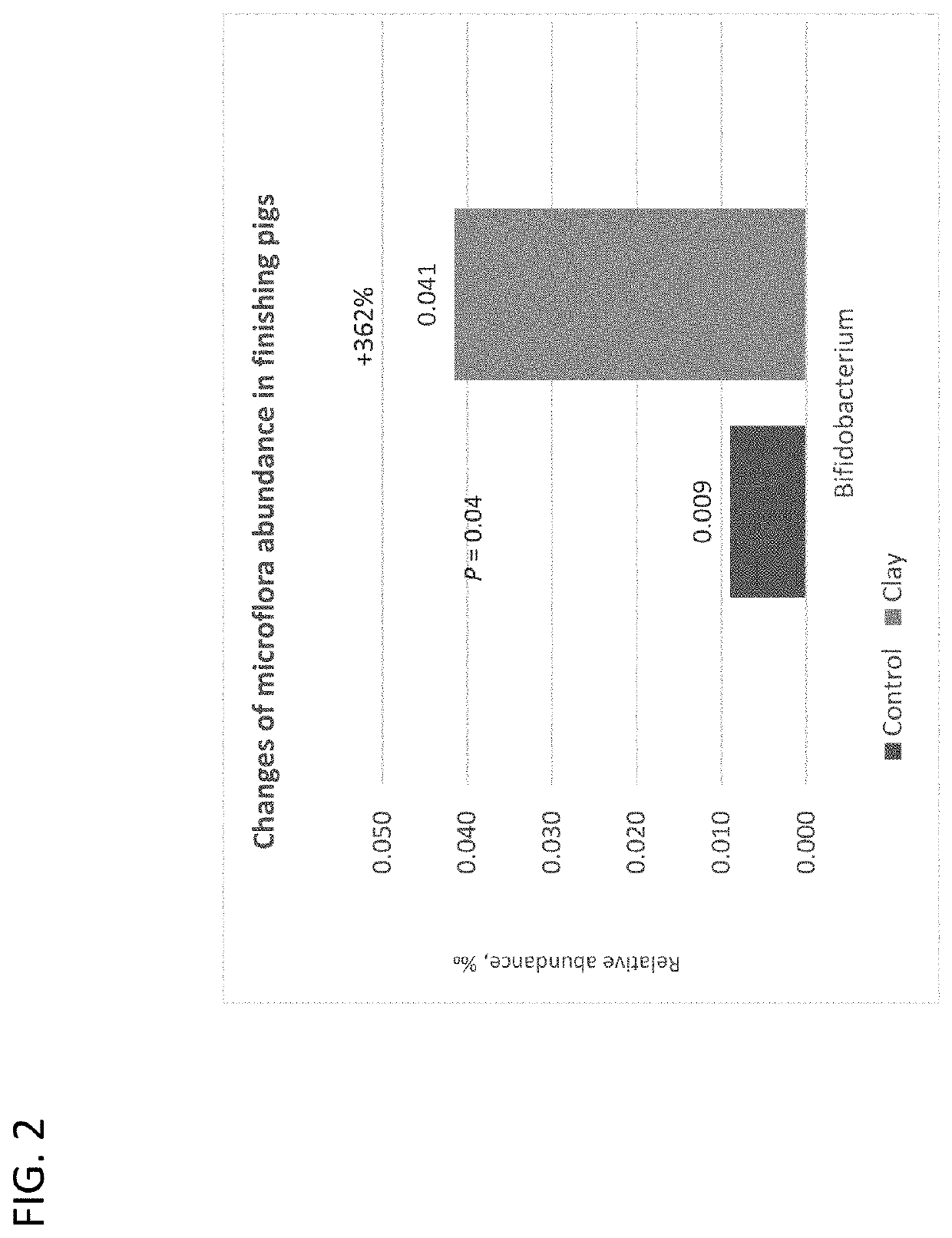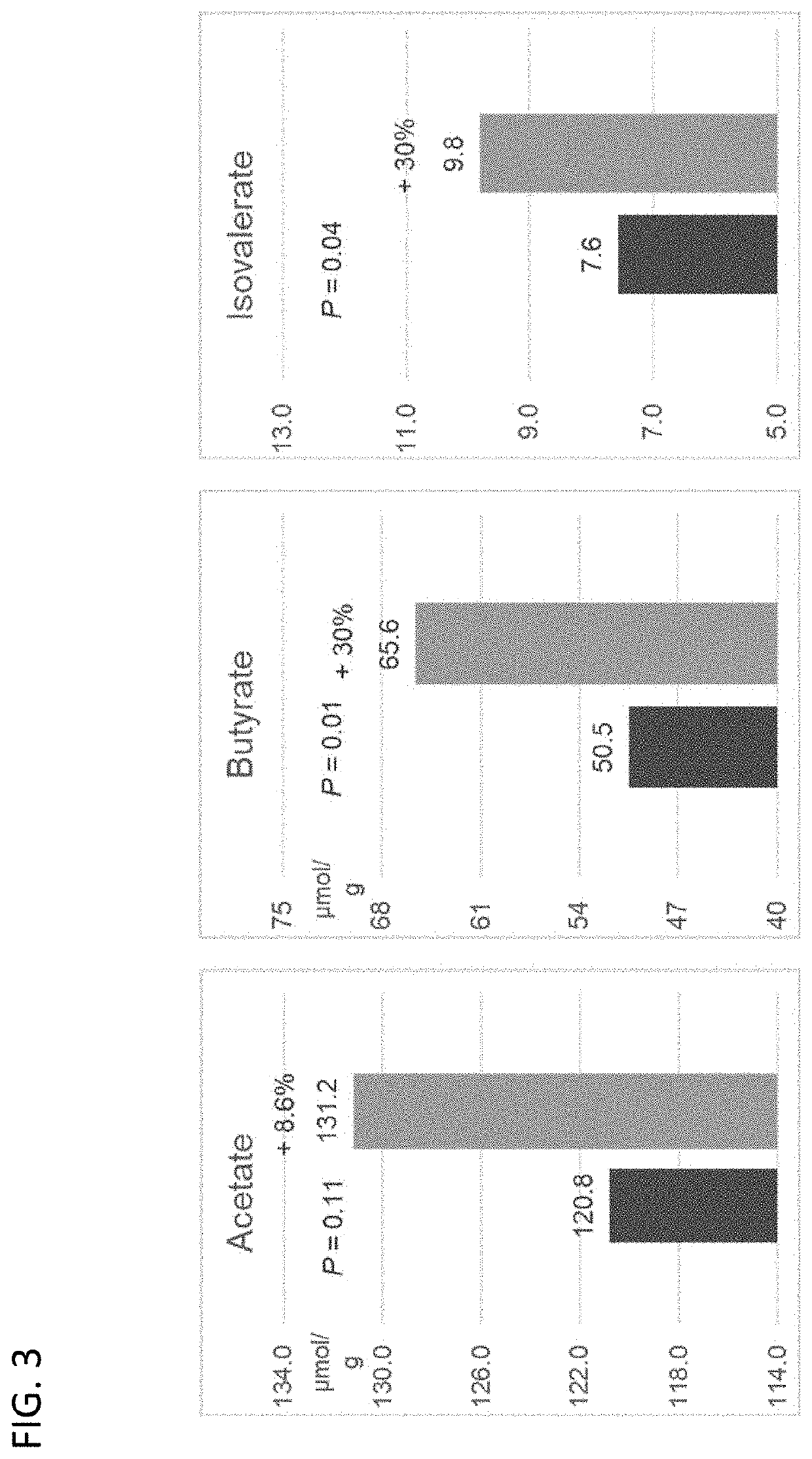Clay compositions and methods for improving animal performance
a technology of compositions and animals, applied in the field of feed additive compositions, can solve the problems of low cost method and low profit margin in these areas
- Summary
- Abstract
- Description
- Claims
- Application Information
AI Technical Summary
Benefits of technology
Problems solved by technology
Method used
Image
Examples
example 1
herapeutic Clay with and without Tribasic Copper Chloride (TBCC) to Grow-Finish Pigs on Growth Performance and Carcass Characteristics
[0123]A study was conducted to evaluate the effects of feeding the therapeutic clay of the instant disclosure with and without TBCC to healthy grow-finish pigs on growth performance and carcass characteristics. At arrival (˜35 lb), pigs were sorted into 27 pigs / pen and balanced as closely as possible on gender. Pens were fed a common diet until the start of the trial, approximately 2 to 3 weeks later. On the first day of the experiment, pens were weighed and blocked by average bodyweight, and pens within block were randomly assigned to one of 4 dietary treatments (1 control and 3 experimental diets; Table 1) in a randomized complete block design. This resulted in 12 pens for Trt 3 and 4 and 11 pens for Trt 1 and 2 for the evaluation of growth performance, carcass characteristics, and health status.
TABLE 1Dietary treatment layoutInclusion Rate# of## of...
example 2
ysis of Four Therapeutic Clay Grow-Finish Studies
[0129]Four experiments were conducted following the same procedure shown in Example 1 to evaluate the effect of feeding Therapeutic clay on growth performance of finishing pigs. In each experiment, finishing pigs (start BW=200 lb) were housed in pens (27 pigs per pen) and randomly assigned to either a control diet (CON) or a diet containing Therapeutic clay at 0.4 lb / ton, resulting in 44 replicated pens for CON and 47 replicated pens for Therapeutic clay treatment over three experiments. Pigs were fed their respective experimental diets for an average of 44 d prior to harvest. Study 1, 3 and 4 did not have TBCC in the basal diet, while Study 2 had TBCC at 0.8 lb / ton to provide 150 ppm of Cu of the diet. Data from the three experiments were compiled for meta-analysis using the MIXED procedure of SAS.
[0130]Data in Table 5 suggest that feeding pigs a diet containing Therapeutic clay from 200 to 290 lbs had improved (P<0.05) ADG and feed ...
example 3
rgy Prediction Equation to Predict Feed Intake and Feed Conversion in Finishing Pigs Fed Therapeutic Clay
[0131]Linear regression analysis was conducted to evaluate the energy partitioning between maintenance and gain of pigs fed the Control diet and the diet containing Therapeutic clay using the data generated from four experiments mentioned in Example 2. The following linear equation was fitted in each study to predict feed intake to reach the requirement for maintenance and gain in pigs fed Control and Therapeutic clay diets separately:
ADFI=β0+β1BW{circumflex over ( )}0.66+β2ADG+β3Trt+β4(BW{circumflex over ( )}0.66×Trt)+β5(ADG×Trt)
in which the term BW{circumflex over ( )}0.66=main effect of energy requirement for maintenance, ADG=main effect of energy requirement for gain, Trt=main effect of dietary treatment, BW{circumflex over ( )}0.66×Trt=interaction between dietary treatments and energy requirement for maintenance, and ADG×Trt=interaction between dietary treatments and energy ...
PUM
 Login to View More
Login to View More Abstract
Description
Claims
Application Information
 Login to View More
Login to View More - R&D
- Intellectual Property
- Life Sciences
- Materials
- Tech Scout
- Unparalleled Data Quality
- Higher Quality Content
- 60% Fewer Hallucinations
Browse by: Latest US Patents, China's latest patents, Technical Efficacy Thesaurus, Application Domain, Technology Topic, Popular Technical Reports.
© 2025 PatSnap. All rights reserved.Legal|Privacy policy|Modern Slavery Act Transparency Statement|Sitemap|About US| Contact US: help@patsnap.com



